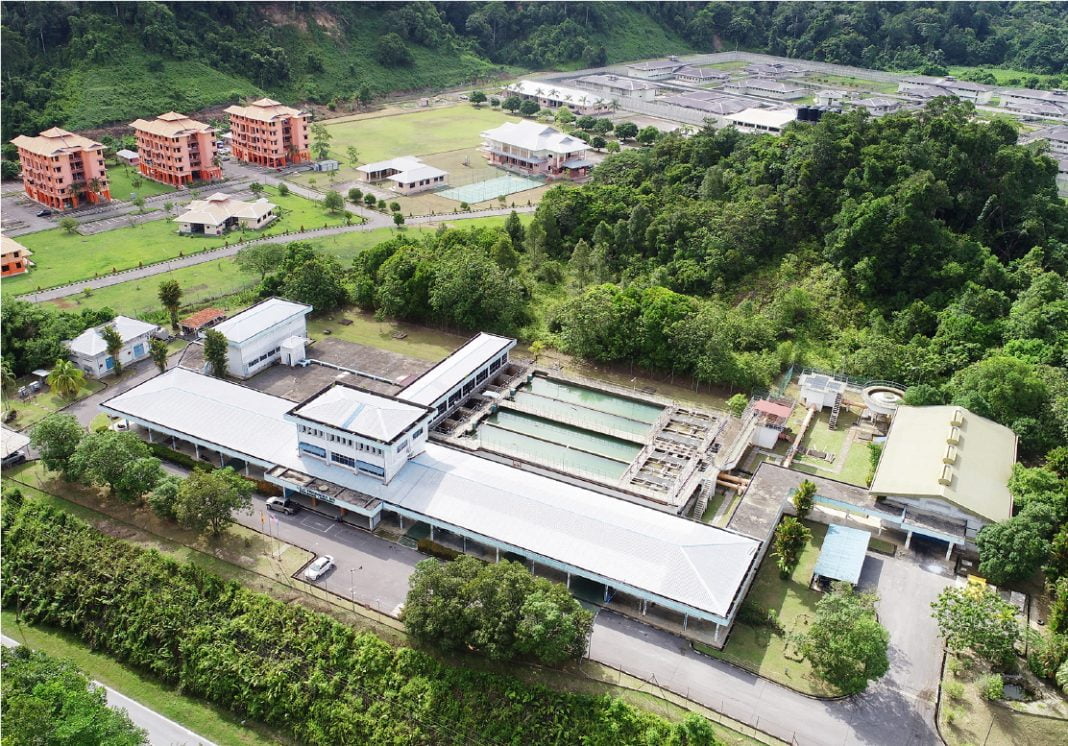Among the challenges facing water utilities in Sarawak and the rest of the world when supplying water is managing their non-revenue water (NRW).
NRW management has been a priority in the Sarawak Government’s water supply initiatives, as it aims to provide clean treated water supply to every household in the State by 2025.
It is one of four major water supply projects that the Government, through the Ministry of Utilities, intends to invest under the 12th Malaysia Plan (2021-2025), in hopes of reducing Sarawak’s NRW to 25 percent in 2025 through a holistic NRW management programme.
The International Water Association (IWA) defines NRW as the difference between “the total amount of water flowing into the water supply network from a water treatment plant” and “the total amount of water that industrial and domestic consumers are authorised to use”.

As seen in the standard international water balance structure that IWA establishes for water utility associations to adopt, NRW consists of three components: physical or ‘real’ losses, commercial or ‘apparent’ losses and unbilled authorised consumption.
IWA considers NRW “one of the lowest hanging fruits” when it comes to enhancing the efficiency of water utilities, yet many countries still struggle to reduce water losses, with NRW representing 25 to 50 percent of water supplied and up to 75 percent in some emerging countries.
According to statistics by the Ministry of Environment and Water Malaysia, NRW accounts for 37.8 percent of total water supply in Sarawak in 2017, which was above the national level of 35.3 percent.

NRW levels that are high usually suggest poor management of water utility, in that unless it addresses water losses, the utility could end up experiencing increased cost in water collection, treatment and distribution, decreased water sales, and sizeable capital expenditure programmes that are frequently promoted in order to meet consumer demand for clean water.
High levels of water losses can also lead to intermittent supply, leaving consumers dissatisfied with substandard services, and exposed to contamination due to leakages during supply interruptions and low pressure periods, posing great danger to their health.
Therefore, water utilities should invest in NRW management to reduce water losses, especially in today’s environment where they are confronted by ageing infrastructure; diminishing water supply; environmental pollution; rapid urbanisation; financial constraints; and many other challenges.
By striving to decrease or maintain NRW at low levels in the long term, water utilities will be able to expand and improve their services; boost financial performance; enhance liveability of cities and towns; increase climate resilience; and lower energy consumption.

They will also have the capability to ensure constant supply of clean treated water to consumers, and even encourage them to conserve water as a means to protect the environment.
However, water utilities must first and foremost overcome problems that hinder them from making progress in NRW management.
In a study by the World Bank, they include a lack of understanding about the problem, in terms of magnitude, sources and costs; a lack of capacity such as insufficient trained staff; limited funding to replace infrastructure; low commitment from management; and weak enabling environment and performance incentives.






